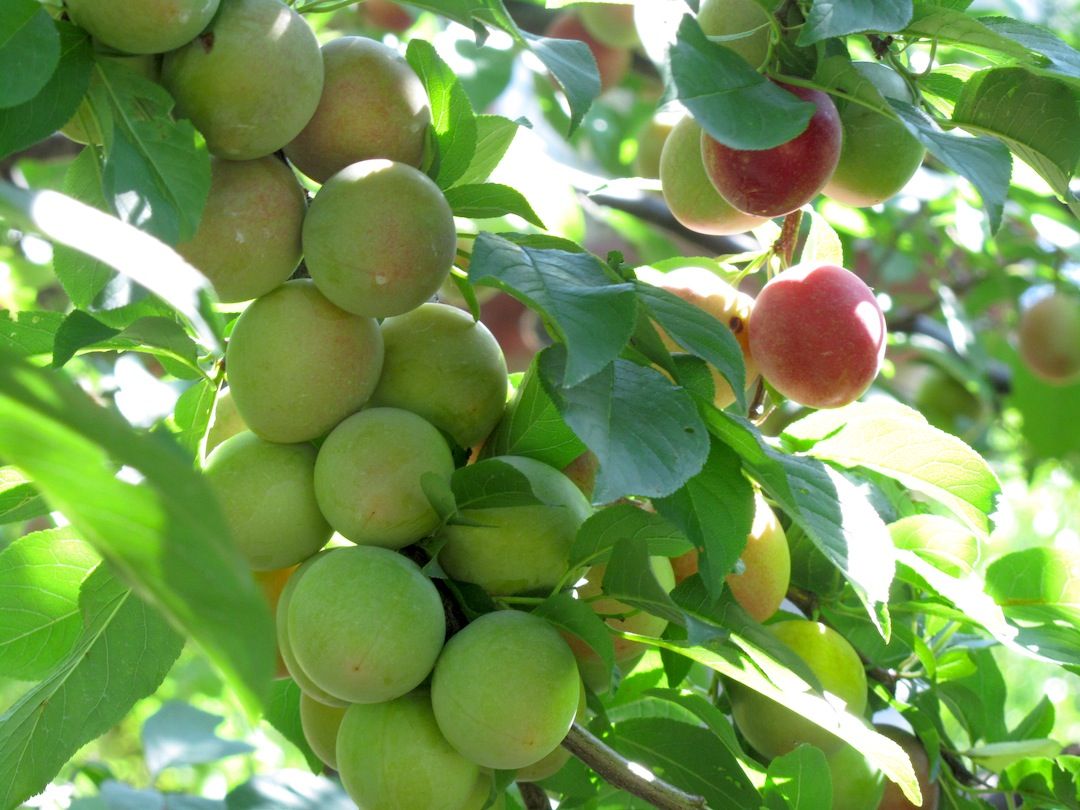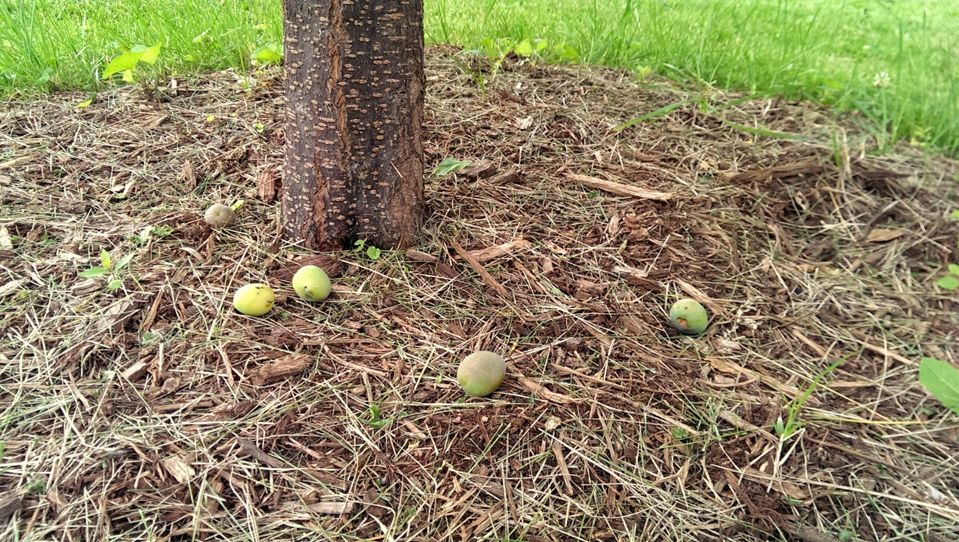4 Benefits of Thinning Fruit Trees

Thinning fruit trees may seem counterproductive, but here are four reasons why thinning out fruit benefits you, your trees, and your fruit harvest.
As a fruit gardener, you may have heard talk about thinning fruit trees. Thinning is the process of removing a selection of fruit from your trees while the fruit is still small.
Now, it may seem counterintuitive to pluck some of the newly developing fruit before it is ripe. After all, growing fruit is your goal! However, thinning fruit trees ultimately works in your favor and, more importantly, it benefits your fruit trees in the long run. Let's discuss why you should thin your fruit trees plus how and when to do it.
4 benefits of thinning fruit:
- Discourage overbearing & early fruit drop.
- Improve remaining fruit size, color, & quality.
- Help to avoid limb damage from a heavy fruit load.
- Stimulate next year’s crop & help avoid biennial bearing*.
* "Biennial bearing" is a tree’s tendency to bear fruit every other year. Left to its own devices, a fruit tree may bear heavily one year, then light (or not at all) the next year. Certain types of fruit tree, like many peach trees, and certain varieties of fruit tree, like Golden Delicious Apple trees, are more likely to bear biennially if the current year’s fruit crop isn’t thinned.
How to Thin Your Tree's Fruit
What you need: Thinning fruit trees is an easy task. All you need is your fingers, or a small pair of sharp pruners, to remove the excess fruit and get the job done.
When to thin out fruit: The window for thinning fruit trees opens after pollination takes place and in the early stages of fruit development – this is usually before the young fruit exceeds an inch in diameter. In most locations, you will no longer need to be concerned with thinning your fruit trees after July.


Thinning Fruit on Apple Trees
The best time to thin apple trees is a month or so after their peak blooming period. When you thin your apples, break up any fruit clusters so that one choice fruit remains. It's usually wise to leave the fruit from the “king bloom”, or the middle bloom in the cluster of flowers, since it is the best candidate for developing into a large, healthy apple. Leave about 6-8 inches between remaining fruit.
On spur-type apple trees, fruit develops on spurs along the inside limbs – bearing fruit from the trunk, outward. These may need to be thinned out to encourage bigger and better fruit from the remaining spurs.
Thinning Fruit on Apricot Trees
Apricot trees are known for their productive nature, so fruit drop will be an issue if the trees aren't thinned. Break up any fruit clusters throughout the tree. Leave about 6 inches between the remaining fruit.
Thinning Fruit on Cherry Trees
The fruit of sweet cherry trees and sour cherry trees are not typically thinned, but, if your trees are having issues with fruit drop due to stress, you might consider thinning some of the fruit. No more than 10 cherries should be on any given spur, so thin clusters that may be creating crowding issues or contributing to cherry drop.

Thinning Fruit on Nectarine Trees & Peach Trees

These fruit trees are notorious for overbearing, which also means they are more than likely going to need to be routinely thinned – especially to avoid damage to the tree. These fruits can get heavy as they mature, and a peach or nectarine tree that is allowed to bear that weight is at risk of its limbs breaking and tearing the bark. Break up any fruit clusters and fruit “twins” that may develop. Leave at least 6 inches of space between remaining fruit.
Thinning Fruit on Pear Trees
Pear trees (both Asian pears and European pears) seldom require thinning, but if your healthy pear tree historically drops fruit while it is still small and unripe, or has a tendency to bear biennially, then consider thinning as a remedy. Remove small, misshapen or injured fruit as soon as it appears. Break up any clusters of fruit, allowing one to two fruits from each cluster to remain in order to improve mature fruit size. Leave about 4-6 inches between remaining fruit.

Thinning Fruit on Plum Trees
Japanese plum trees are as notorious for overbearing and fruit drop as nectarine and peach trees. These trees have a tendency to bear in clusters along the branch. When the fruit is large enough to be easily picked, thin these plums and break up the clusters, allowing room for the fruit to grow in size and helping to avoid premature fruit drop. Leave about 4-6 inches between the remaining fruit.

European plum trees tend to require less thinning than their Japanese counterparts; however, if your prune-plum fruit matures but remains small due to overbearing, then you might want to thin the fruit to improve remaining fruit size in the future. Leave remaining single fruits every 2-3 inches, or remaining pairs of fruit every 6 inches.
It's important to note that, even if you don’t thin your tree's fruit, you might discover the tree will get rid of the excess fruit – and sometimes all of the fruit – itself. Learn more about this natural shedding process called fruit drop:



